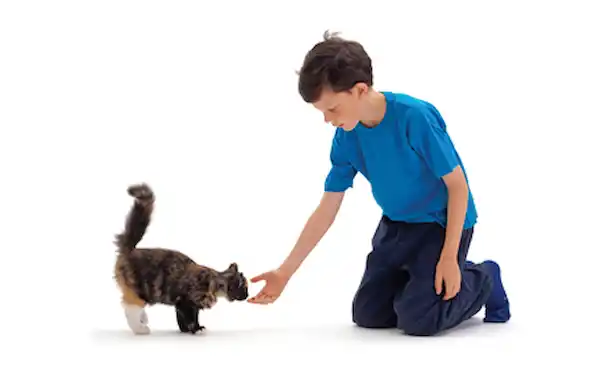Training your kitten to come when called is an essential skill that not only enhances your bond but also ensures their safety. Here are some effective tips for the best cat training methods to achieve this goal.
Understanding Your Kitten’s Behavior
Before diving into training, it’s important to understand your kitten’s behavior. Kittens are naturally curious and playful, and training should align with their instinctive behaviors.
Observing Natural Instincts
- Curiosity: Kittens love to explore, so use their curiosity to your advantage.
- Playfulness: Incorporate play into training sessions to make learning fun.
- Affection: Positive reinforcement through affection can be very effective.
Creating a Positive Training Environment
A positive environment is crucial for successful training. Ensure your kitten feels safe and comfortable.
Establish a Training Space
- Quiet Area: Choose a quiet, distraction-free area for training sessions.
- Consistency: Use the same space each time to build familiarity.

Using Positive Reinforcement
- Treats: Use small, tasty treats to reward your kitten.
- Praise: Combine treats with verbal praise to reinforce good behavior.
- Petting: Gentle petting can also be a powerful reward.
Step-by-Step Guide to Training Your Kitten to Come When Called
Follow these steps to effectively train your kitten to respond to their name.
Step 1: Choose a Distinct Command
Select a clear, consistent command like “come” or your kitten’s name.
- Consistency: Use the same command every time to avoid confusion.
- Tone of Voice: Use a happy, inviting tone to encourage your kitten.
Step 2: Start with Short Distances
Begin training at a short distance, gradually increasing as your kitten becomes more confident.
- Initial Training: Start with your kitten just a few feet away.
- Gradual Increase: Slowly increase the distance over time.
Step 3: Use Treats and Positive Reinforcement
Hold a treat in your hand and call your kitten using the chosen command.
- Reward Immediately: Give the treat and praise as soon as your kitten responds.
- Repeat: Practice this several times a day for short periods.
Step 4: Incorporate Play into Training
Incorporate play to keep training sessions fun and engaging.
- Interactive Toys: Use wand toys or balls to entice your kitten to come to you.
- Hide and Seek: Hide in different areas and call your kitten to find you.
Troubleshooting Common Challenges
Even with the best cat training techniques, you may encounter some challenges. Here’s how to address them.
Kitten Not Responding
If your kitten doesn’t respond initially, don’t get discouraged.
- Patience: Be patient and give your kitten time to learn.
- Repeat Training: Consistency is key, so keep practicing.

Distractions
Kittens can easily get distracted during training.
- Minimize Distractions: Train in a quiet area and gradually introduce distractions.
- Focus Training: Use high-value treats that your kitten finds irresistible.
Maintaining the Training Routine
Consistency is crucial in maintaining your kitten’s training.
Daily Practice
Incorporate short training sessions into your daily routine.
- Regular Sessions: Practice daily to reinforce the behavior.
- Variety: Change up the training environment to keep your kitten engaged.
Reinforcing Positive Behavior
Continue to use positive reinforcement even after your kitten has learned the command.
- Occasional Rewards: Offer treats and praise intermittently to keep the behavior strong.
- Consistency: Maintain a consistent approach to prevent regression.

Benefits of Training Your Kitten to Come When Called
Training your kitten to come when called offers numerous benefits.
Safety
Ensuring your kitten responds to your call can prevent them from getting into dangerous situations.
Bonding
Training strengthens the bond between you and your kitten, enhancing trust and communication.
Behavior Management
A well-trained kitten is easier to manage and less likely to engage in undesirable behaviors.
Conclusion
Training your kitten to come when called is a rewarding process that requires patience, consistency, and positive reinforcement. By following these best cat training tips, you can ensure your kitten learns this important skill effectively. Remember, a well-trained kitten is not only safer but also a more enjoyable companion. Happy training!





















